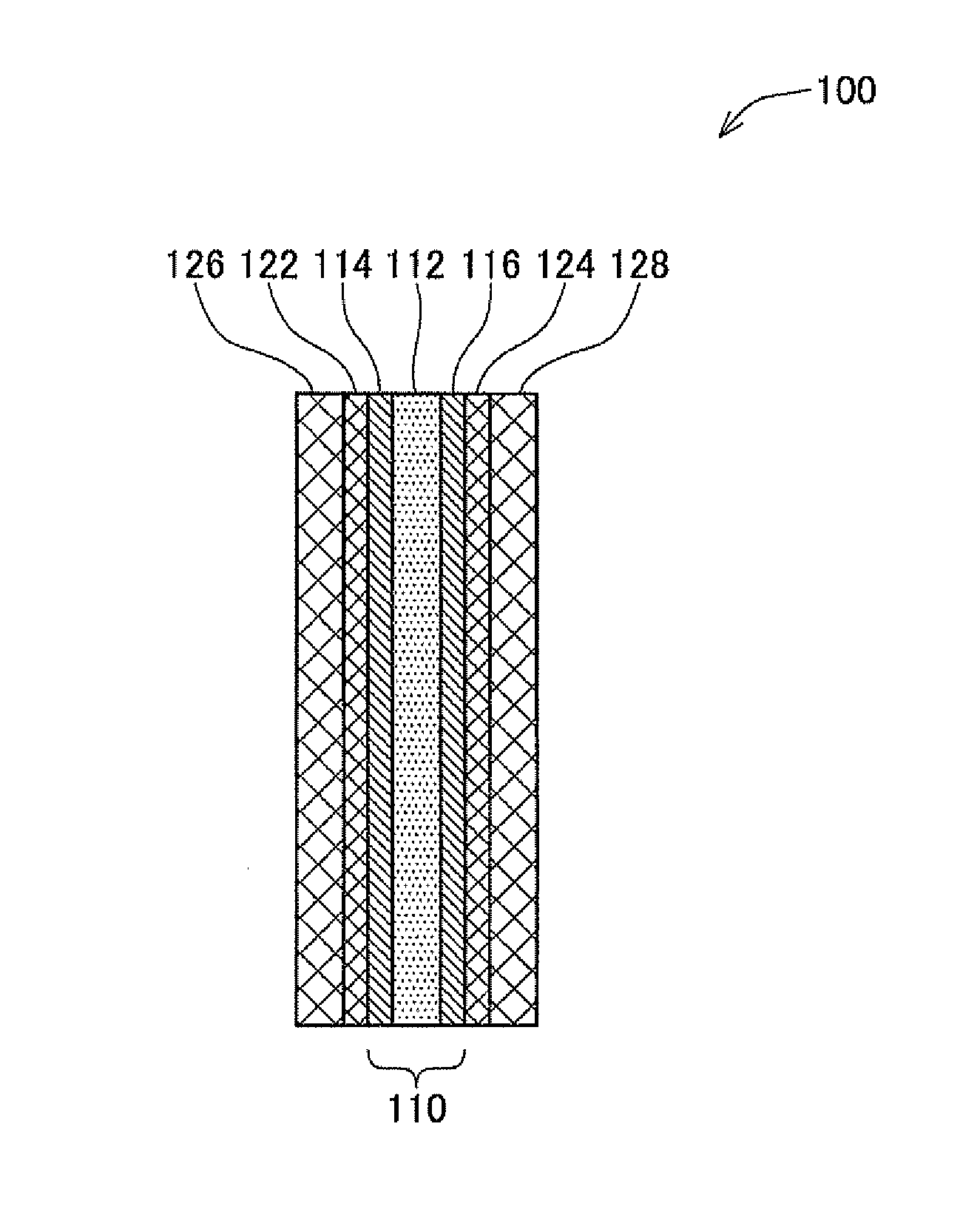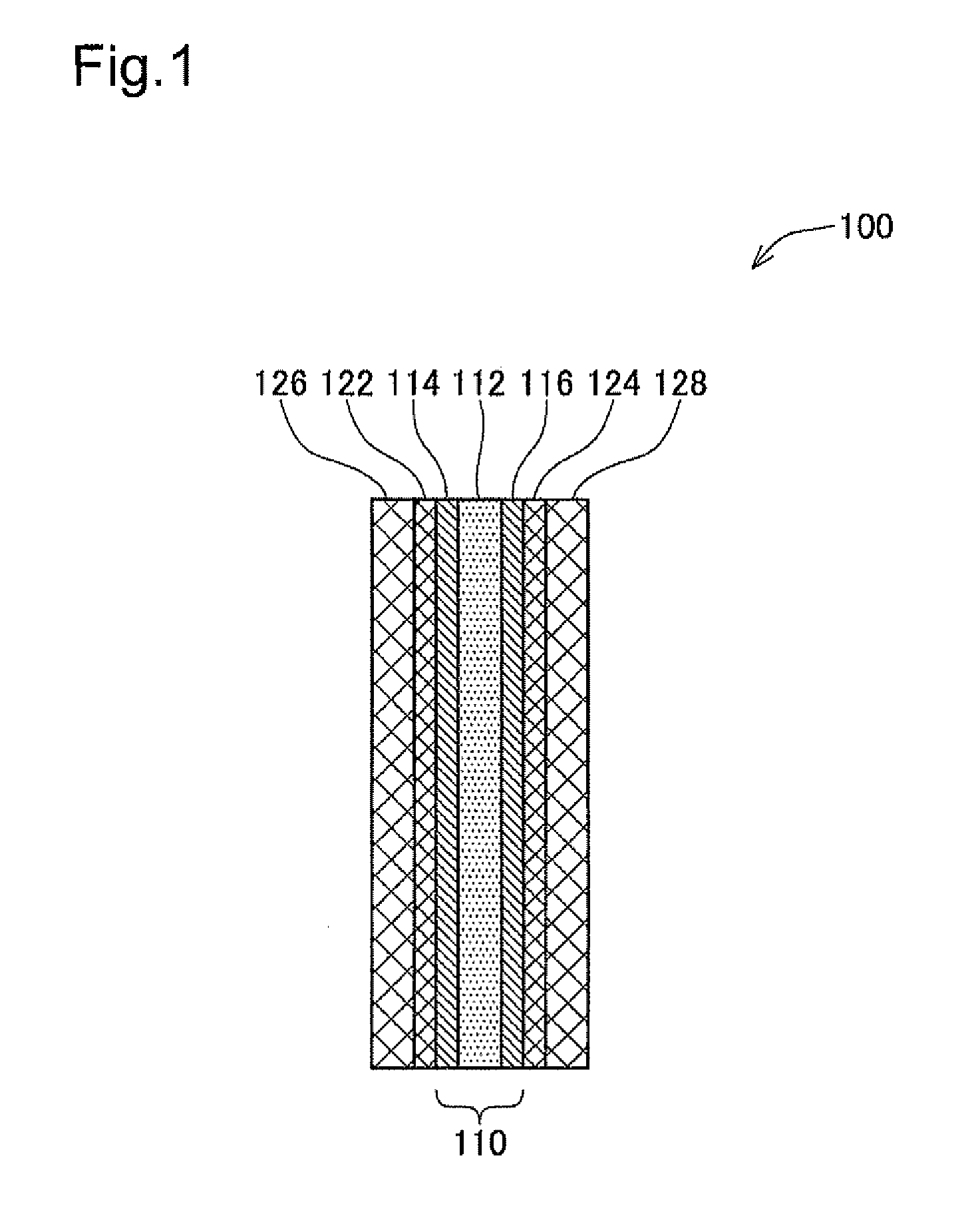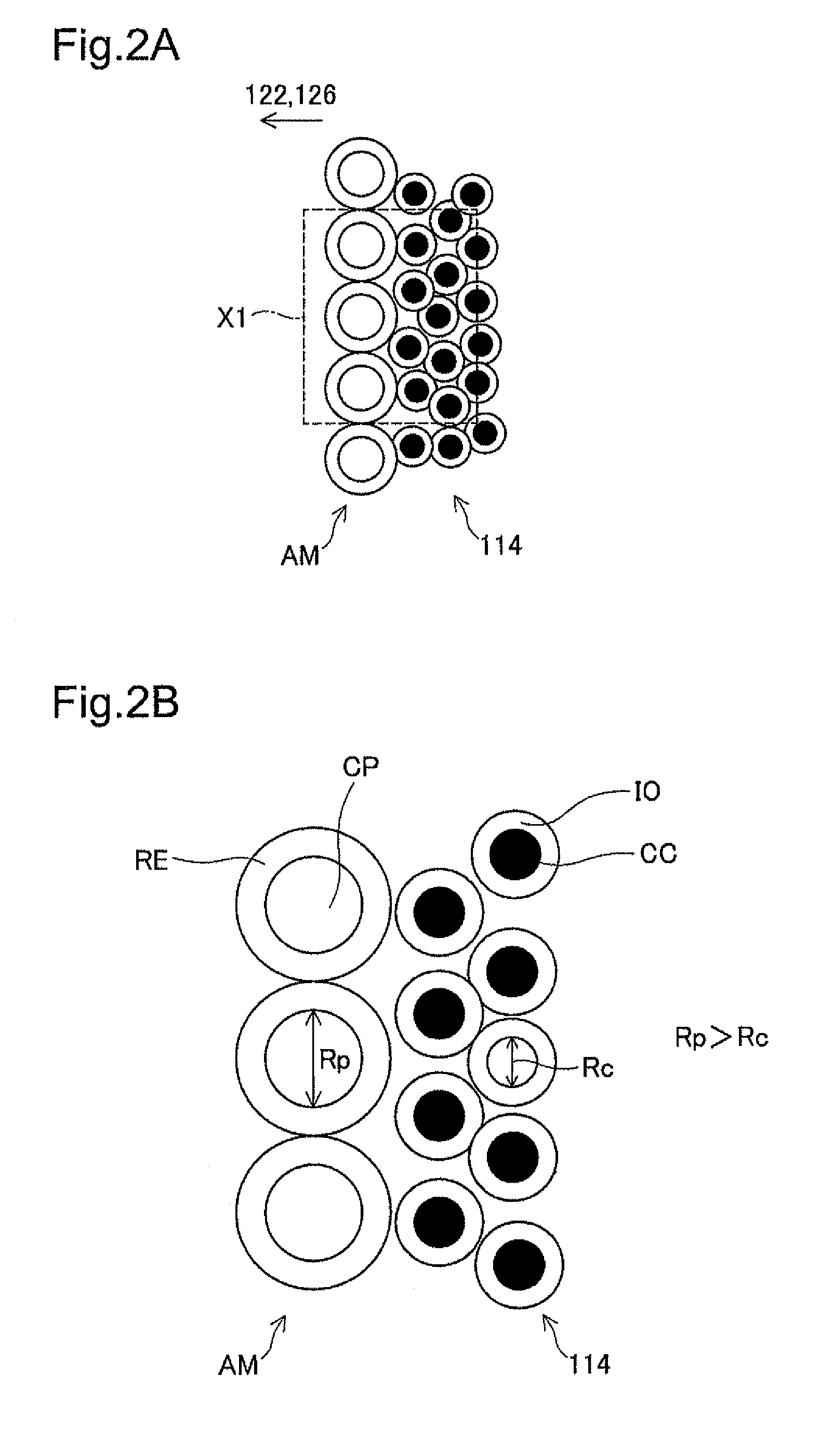Adhesive material for fuel cell and fuel cell
a fuel cell and adhesive technology, applied in the direction of non-metal conductors, cell components, conductors, etc., can solve the problems of large internal stress likely to occur in the electrolyte membrane, deformation or degradation of dried layers, and insufficient adhesive strength, etc., to achieve the effect of convenient application
- Summary
- Abstract
- Description
- Claims
- Application Information
AI Technical Summary
Benefits of technology
Problems solved by technology
Method used
Image
Examples
modification 1
D1. Modification 1
[0053]The structure of the fuel cell 100 according to the above embodiment is only illustrative, and the structure of the fuel cell 100 may be changed and modified in various ways. For example, the materials of the respective layers of the fuel cells 100 are not limited to the materials specified in the above embodiment but may be any other adequate materials. The conductive carbon is used as the conductive particles included in the adhesive material according to the above embodiment, but may be replaced with another type of conductive particles, such as carbon nanotubes.
[0054]According to the above embodiment, the water repellent layers 122 and 124 are formed on the surfaces of the gas diffusion layers 126 and 128 of the fuel cell 100. According to another embodiment, there are no water repellent layers 122 and 124 formed on the surfaces of the gas diffusion layers 126 and 128. In the latter application, the fuel cell with the strongly bonded layers is manufacture...
modification 2
D2. Modification 2
[0055]The composition (i.e., concentrations of the respective components) of the adhesive material according to the embodiment is only illustrative and not restrictive in any sense. Any adhesive material containing the adhesive resin, the conductive particles and the conductive resin can provide both the adhesiveness and the electron conductivity between the layers of the fuel cell produced even by pressure bonding at ambient temperature. In the adhesive material AM according to the above embodiment, the average particle size Rp of the conductive carbon CP is greater than the average particle size Rc of the carbon particles CC as the catalyst support. The magnitude relationship of the particle size is, however, not limited to this embodiment.
PUM
| Property | Measurement | Unit |
|---|---|---|
| temperature | aaaaa | aaaaa |
| absolute humidity | aaaaa | aaaaa |
| absolute humidity | aaaaa | aaaaa |
Abstract
Description
Claims
Application Information
 Login to View More
Login to View More - R&D
- Intellectual Property
- Life Sciences
- Materials
- Tech Scout
- Unparalleled Data Quality
- Higher Quality Content
- 60% Fewer Hallucinations
Browse by: Latest US Patents, China's latest patents, Technical Efficacy Thesaurus, Application Domain, Technology Topic, Popular Technical Reports.
© 2025 PatSnap. All rights reserved.Legal|Privacy policy|Modern Slavery Act Transparency Statement|Sitemap|About US| Contact US: help@patsnap.com



